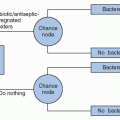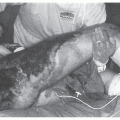Transmission of
M. tuberculosis occurs person to person via the airborne route. When an infected person speaks, coughs, sneezes, or sings, they release “droplet nuclei” into the air. Droplet nuclei are small, liquid particles, some of which contain
M. tuberculosis organisms (
15). Infectious droplets are also generated during certain medical procedures, including sputum induction, bronchoscopy, endotracheal intubation, autopsy, and drainage of tuberculous abscesses (
16). Not all droplets transmit
M. tuberculosis infection. Most large droplets (>10
µm in diameter) settle to the ground before susceptible hosts can inhale them. Those that are inhaled get trapped in the upper airways where they are expunged into the oropharynx by beating cilia, and subsequently swallowed and sterilized by gastric acid (
15). Droplets <1
µm in diameter also are ineffectual at transmitting infection; the majority evaporate before they can be inhaled by susceptible hosts, and those that manage to enter the respiratory tract are typically exhaled during subsequent breaths. Droplet nuclei between 1 and 5
µm in diameter carry the greatest risk of transmitting infection. In this size range, droplets can remain suspended in the air for prolonged periods of time and be transported long distances via air currents and ventilation systems. Furthermore, these droplets are more likely to reach and settle in the alveolar airspaces once inhaled (
16). The droplets need carry only one viable
M. tuberculosis organism to transmit infection (
17). Several factors determine the probability that an individual who is exposed to a patient with TB will inhale infectious droplets and develop TB infection (
Table 33.1) (
18).







